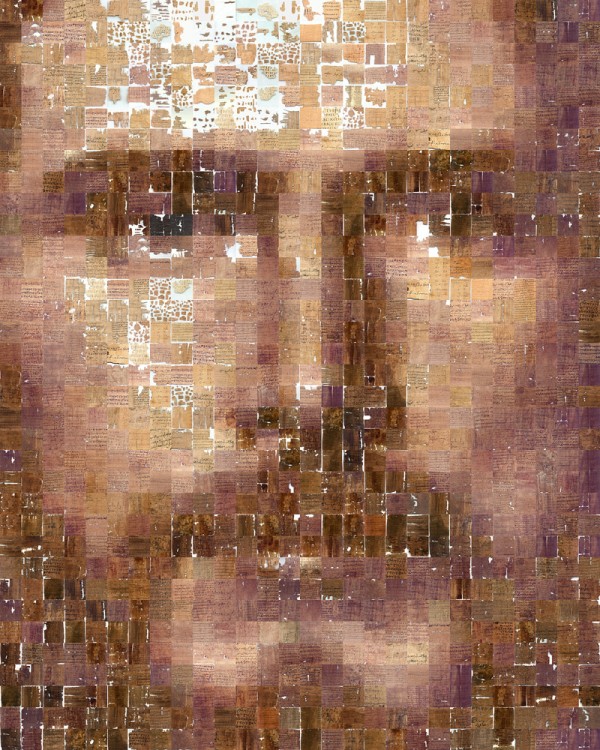
Robert Silvers, “Christ II,” an image of Christ composed of images of the Dead Sea Scrolls.
NEWSWORKS: The Dead Sea Scrolls are now in Philadelphia. The ancient texts, written in Hebrew on parchment and stored in clay jars for two millennia, reveal much about the origins of Judaism. In the traveling show opening Saturday at the Franklin Institute, “Dead Sea Scrolls: Life and Faith in Ancient Times,” the scrolls are the last things visitors see. It begins with large, high-definition projections of lapping waves at the Dead Sea. “In the dry caves at the lowest point on Earth, that scroll survived for 2,000 years, until a shepherd who couldn’t read it stumbled on an open jar,” an actor in the room recites dramatically. “His find led to nothing less that the oldest known copies of the Hebrew Bible.” MORE
RELATED: Dead Sea Scrolls opens in Philadelphia with 10 scrolls from the Hebrew Bible (also known as the Old Testament, or Torah) as its focal point – most notably the oldest-known handwritten section of Genesis ever to come to the United States. The parchment scroll, dating to around 50 CE (Common Era), includes one of the most memorable lines from the Old Testament: “In the beginning, God created the heaven and the earth.” A second set of 10 scrolls will then replace the first set, due to limits on the amount of light the ancient paper can be exposed to over time, Wint said. All told, the 20 scrolls to be displayed in Philadelphia contain passages from Genesis, Exodus, Isaiah and other books of the Old Testament as well as non-biblical writings. They range in subject from the creation of the earth to God’s instruction to Moses that led to his peoples’ flight to freedom Pharaoh to Isaiah’s prophecy that “The wolf shall live with the lamb the leopard shall lie down with the kid.” Most of the texts are written in Hebrew. MORE
